15 Low Maintenance Outdoor Plants In 2023 - Ideal Plants
Written by Ivy
Dec 15 2022
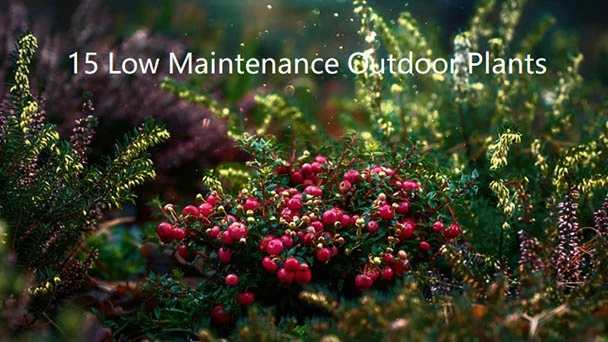
Landscapes that require little maintenance are important to many of us. Working outdoors can be uncomfortable during the long, hot, and humid months.
Here are a few low-maintenance outdoor plants that will give your home a lovely setting without requiring regular maintenance, including palms, flowering trees, groundcover, shrubs, and ferns!
Low Maintenance Outdoor Plants Overview
Best Low-Maintenance Palms And Palm-Like Plants
- Sabal Palms
- Zamia Floridana
- Brahea
Best Low-Maintenance Flowering Trees And Shade Trees
- Crapemyrtle
- Live Oak
- Lignum Vitae
Best Low-Maintenance Groundcovers
- Dwarf Lantana
- Wild Pennyroyal
- Moss Verbena
Best Low-Maintenance Shrubs
- Schilling Holly
- Schefflera ‘Trinette'
- Boxwood
- Dwarf Walter's Viburnum
Best Low-maintenance Fern Plants
- Foxtail Fern
- Flax Lily
Best Low-Maintenance Palms and Palm-Like Plants
Many Florida homeowners opt to have palm trees on their property because they are an iconic landscape plant for the state. Some palm trees, on the other hand, necessitate intensive maintenance due to their dried fronds, dropped fruits, and susceptibility to numerous plant diseases.
Additionally, to maintain their health, some palm species need to be fertilized frequently. The best low maintenance outdoor plants for Florida avoid many of these problems while offering lovely greenery for home landscaping.
1. Sabal Palms

There are many uses for this type of palm tree. One is situated near a window at the front of my house, allowing me to look out and take in its lush foliage whenever I want to.
You can also plant it in defined "islands" in the expanse of your lawn. Sabal palms also provide some nice shade for the backyard. Maintenance is easy.
Simply remove dead fronds twice a year, and if there is a drought, provide some watering. Because sabal palms can make the most of the nutrients in the soil, additional fertilizing is rarely necessary. With the least demanding maintenance, these palms provide the lushness of the traditional Florida landscape.
2. Zamia Floridana
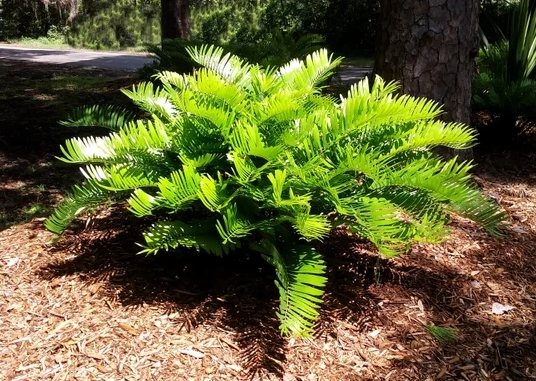
This plant, though it might be mistaken for a type of palm, is actually a cycad, which is a different species. The leaflets of the plant can be short and wide or long and narrow, giving it a variety of appearances.
Depending on where it is located in the state, even the height can change. The Zamia floridana plant only occasionally needs fertilizing and is resistant to cold and drought. The plant can be used as a ground cover to stabilize soil in lawn areas, as a shrub, in groups along structures, or as a ground cover.
3. Brahea
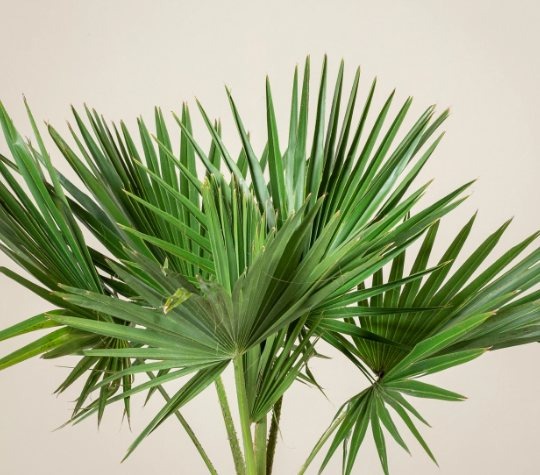
The Mexican Fan Palm, also known as Brahea, adds a pleasing touch to the landscaping of Florida homes with its blueish coloring. It can survive anywhere and is salt- and drought-tolerant, but it benefits from a little regular watering.
For more delicate plants, the broad, fan-shaped leaves offer shade. This plant can be used as screening plants, at bases, and at entrance ways.
Best Low-Maintenance Flowering Trees and Shade Trees
Because Florida has year-round sunshine, it makes sense to plant trees that will provide shade. These trees not only make it easier to enjoy the outdoors, but they also lower energy costs by keeping indoor spaces cooler.
Trees with flowers brighten up home landscaping and draw wildlife to your property. Here are a few low-maintenance choices for your home landscaping:
4. Crapemyrtle
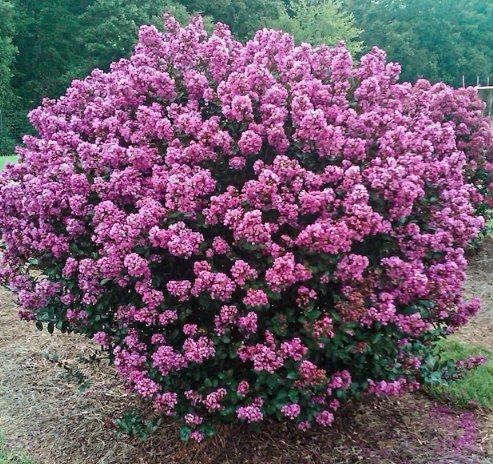
This tree is well-known and will produce blooms all year long. There are numerous colors in which it blooms. This species should be planted in a location with lots of sunlight.
Both heat and drought don't harm the crapemyrtle. It only needs very little fertilizing to remain healthy. To fit any property area, Crapemytrle is offered in a variety of sizes.
5. Live Oak
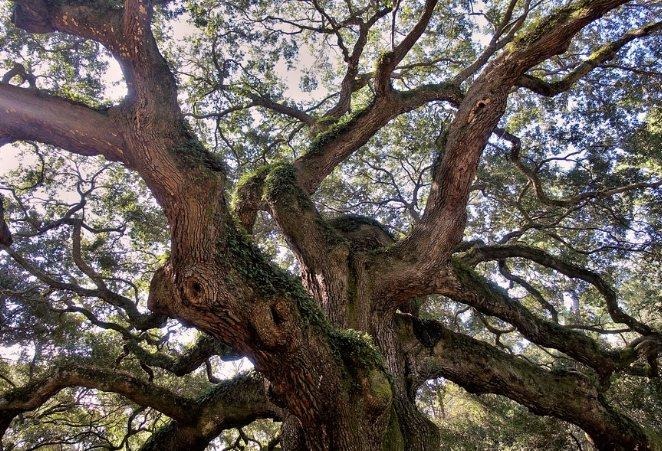
The southern United States' most recognizable tree., the live oak is a native species to Florida is adapted to its particular climate well. Fast-growing and attractive in shape, the live oak tree offers much-needed relief from the summer heat.
It may need to be pruned to prevent breakage during hurricane weather and requires well-draining soil to thrive.
6. Lignum Vitae
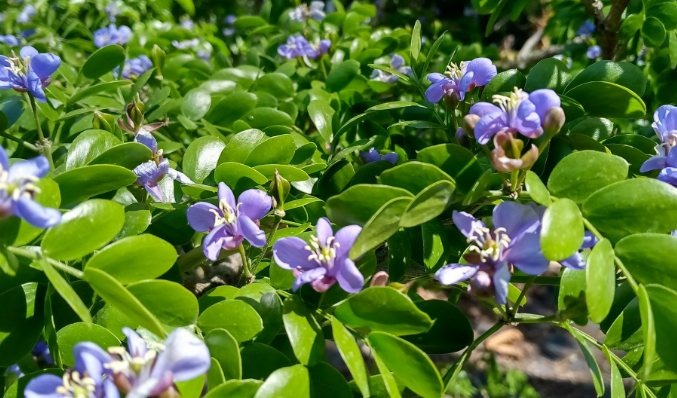
This species of tree is low maintenance and slow growing. It is a native evergreen plant to Florida and a lovely option for backyard landscaping.
It provides shade and beauty with its black-tinted bark, leathery green leaves perched on numerous branches, and blue-purple flowers followed by yellow berries. The plant can withstand drought, salt, and thrive in wet soil. Pruning is only necessary occasionally.
Best Low-Maintenance Groundcovers
On your property, there might be some spots where lawn grass won't grow. In order to fill in bare spots and stop soil erosion, a groundcover plant can frequently offer good soil coverage.
Native groundcovers are frequently the best option, especially in salty coastal areas or places where flooding is a result of heavy rains. For your landscaping requirements, each of the following has a distinct advantage.
7. Dwarf Lantana
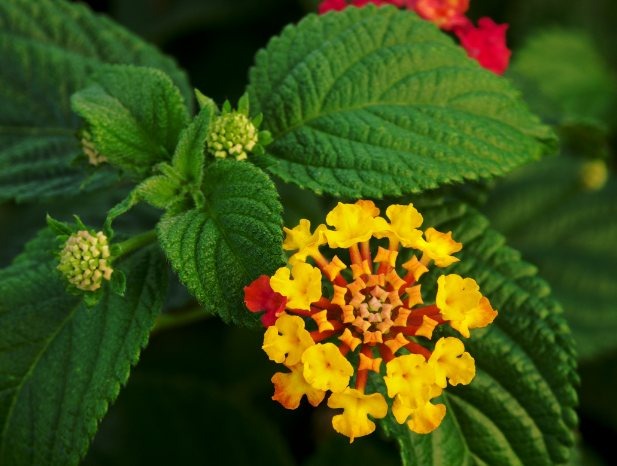
This plant, a native of Florida, can be used as a groundcover in spots where lawn turf fails to flourish because it has adapted well to the state's climate.
Once established, dwarf lantana is drought-tolerant but initially requires watering to grow. Various colored small flowers bloom in the spring and summer. Pick a variety that produces few seeds to avoid becoming invasive.
8. Wild Pennyroyal
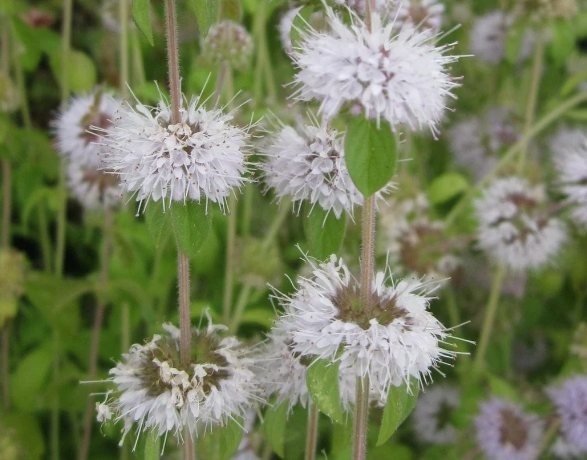
This native plant to Florida is a member of the mint family rather than a true pennyroyal. It can withstand drought and grows slowly. On short stems, tiny flowers bloom during the winter and fall.
Native American tribes used the natural flea repellent wild pennyroyal as a medicine. Once established, it doesn't need much maintenance.
9. Moss Verbena
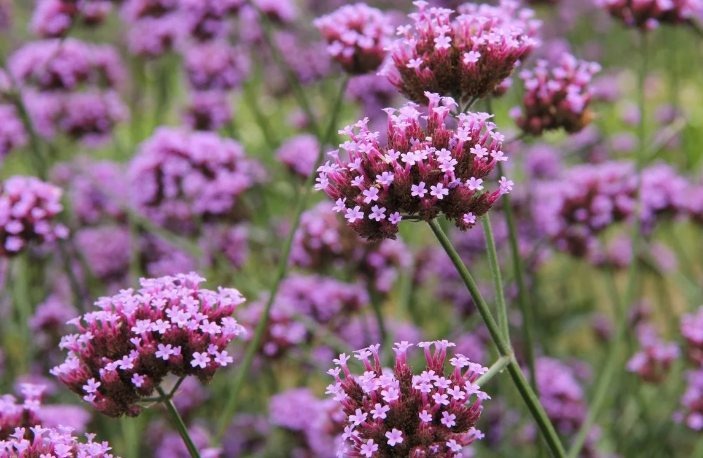
When planted on beachfront properties, this low-growing perennial produces lovely lavender flowers and can handle salt well. Dark, fern-like leaves are present.
In order to prevent it from spreading too far, moss verbena can be grown in either the sun or the shade. Bees and butterflies flock to it.
Best Low-Maintenance Shrubs
10. Schilling Holly
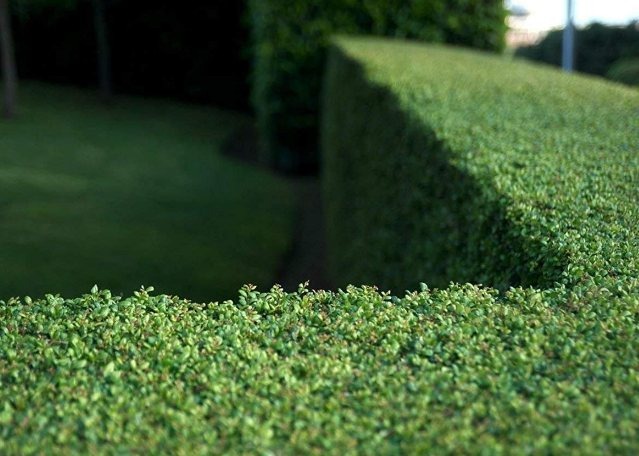
This strong holly is perfect for hedges because of its compact, rounded form. Despite not having undergone any formal cutting, it appears to have been professionally shaped.
When left alone, individual shrubs form a solid hedge, but you can also shape them into spheres to add more visual interest.
11. Schefflera ‘Trinette'
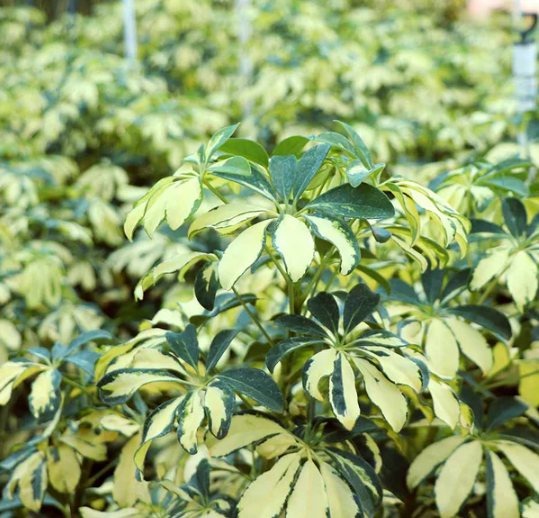
This well-liked variegated shrub is common throughout Florida, and for good reason. Schefflera Trinette is awesome!
With bright green and yellow leaves, this showy, adaptable shrub does well in either sun or shade, looks great almost anywhere, and needs little maintenance.
What the heck, this is such a great Florida low-maintenance shrub, get a few of them. They look great as an accent, as a foundation planting beneath windows, inside your pool cage, in a planter, and lining your front walkway.
12. Boxwood
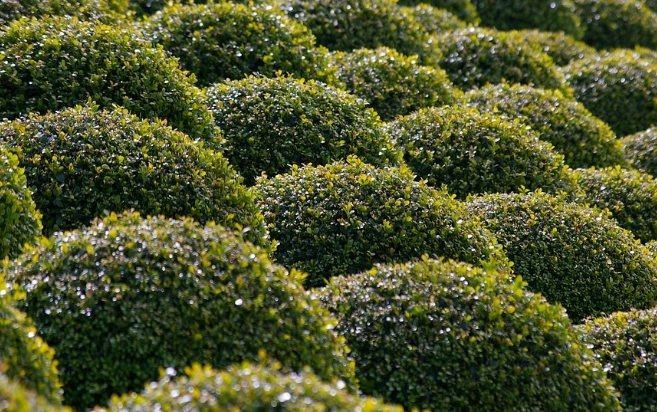
Often found in opulent, formal landscapes, these dense, evergreen shrubs have delicate, glossy leaves.
Try using Boxwood as a formal hedge, a winding border, or in pairs to flank an entrance. Additionally, they work well as plantings for foundations.
Unless you want to keep them sheared as a hedge, boxwood are typical low-maintenance Florida shrubs.
13. Dwarf Walter's Viburnum
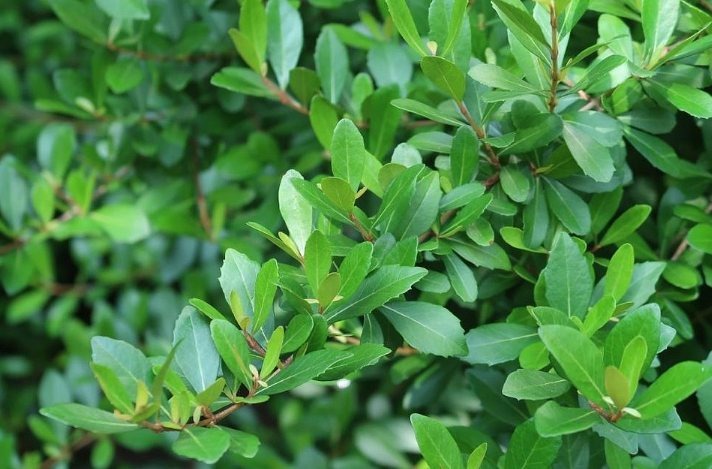
Walter's viburnum can be grown as a specimen shrub, a privacy hedge, or even a small tree.
It has attractive white spring blooms that entice butterflies and songbirds. It also has glossy, deep green leaves.
Best Low-maintenance Fern Plants
14. Foxtail Fern
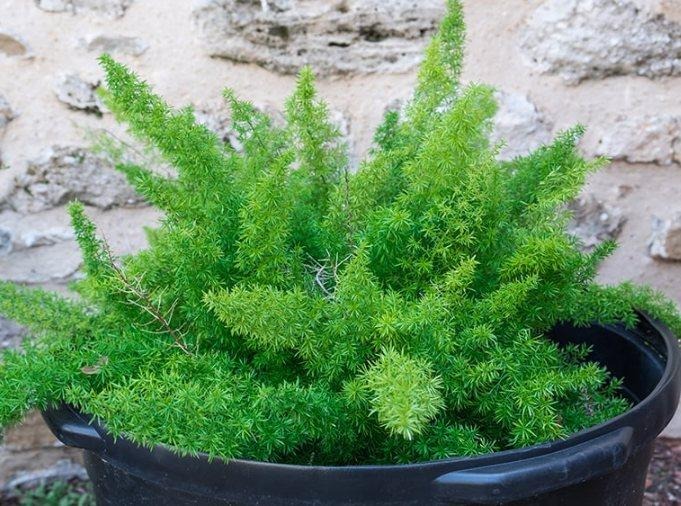
Although Foxtail fern fluffy plant isn't a true fern, it does resemble a fox tail.
The fern-like plant has symmetrical arching plumes of densely arranged, needle-like leaves that appear soft and delicate.
Don't be deceived by their delicate and frail appearance. They require little care and are tough and hardy. They don't need much water once they're established.
15. Flax Lily
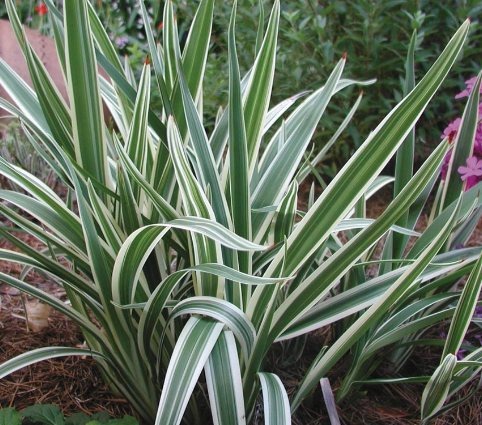
Flax Lily, a hardy flowering perennial that forms low clumps, functions very similarly to ornamental grass in your yard.
This clumping plant has robust bladed foliage and reaches a height of 30 inches.
The spring season ushers in star-shaped flowers, which are followed by stunning blueberries in the middle of the summer.
Latest Updated
- Benefits of Bugleweed - 7 Science-backed Health Benefits
- Bugleweed Dangers & Side Effects - Is It Poisonous?
- How to Plant Evergreen Trees - What You Should Know
- When to Plant Evergreens - Grow Guide for Evergreen Trees
- 12 Wonderful Evergreen Shrubs for Your Garden
- 12 Popular Evergreen Plants with Pictures for Beginners
- When And How To Prune A Lilac Bush Like a Pro
- How to Grow & Care for Lilac Vine (Hardenbergia Violacea)
- Japanese Lilac Tree (Syringa Reticulata) Care & Propagation Guide
- Shumard Oak Pros and Cons - What to Know
Popular Articles
- Winter maintenance of Antirrhinum Majus
- How to Grow Terminalia Mantaly Tree
- How to Grow and Care for Crossostephium Chinense
- How to grow Antirrhinum Majus in spring
- Peristeria Elata (Dove Orchid) Profile: Info & Care Guide
- Underwatered Snake Plant (Sansevieria Trifasciata) - Signs And How To Fix
- How to Care for Brazilian Jasmine Plant (Mandevilla Sanderi)
- How to Grow & Care for Graptopetalum Purple Delight in Summer
- Rosa Chinensis (China Rose): Plant Growing & Care Tips
- How to Care for Baby Sun Rose (Aptenia Cordifolia)